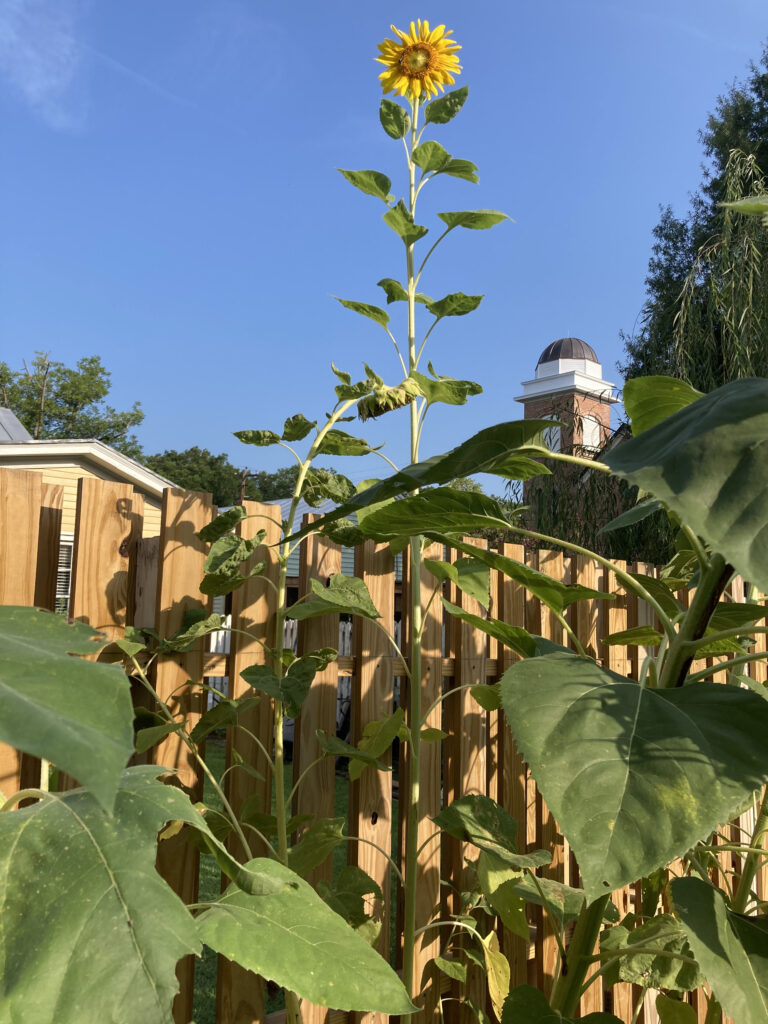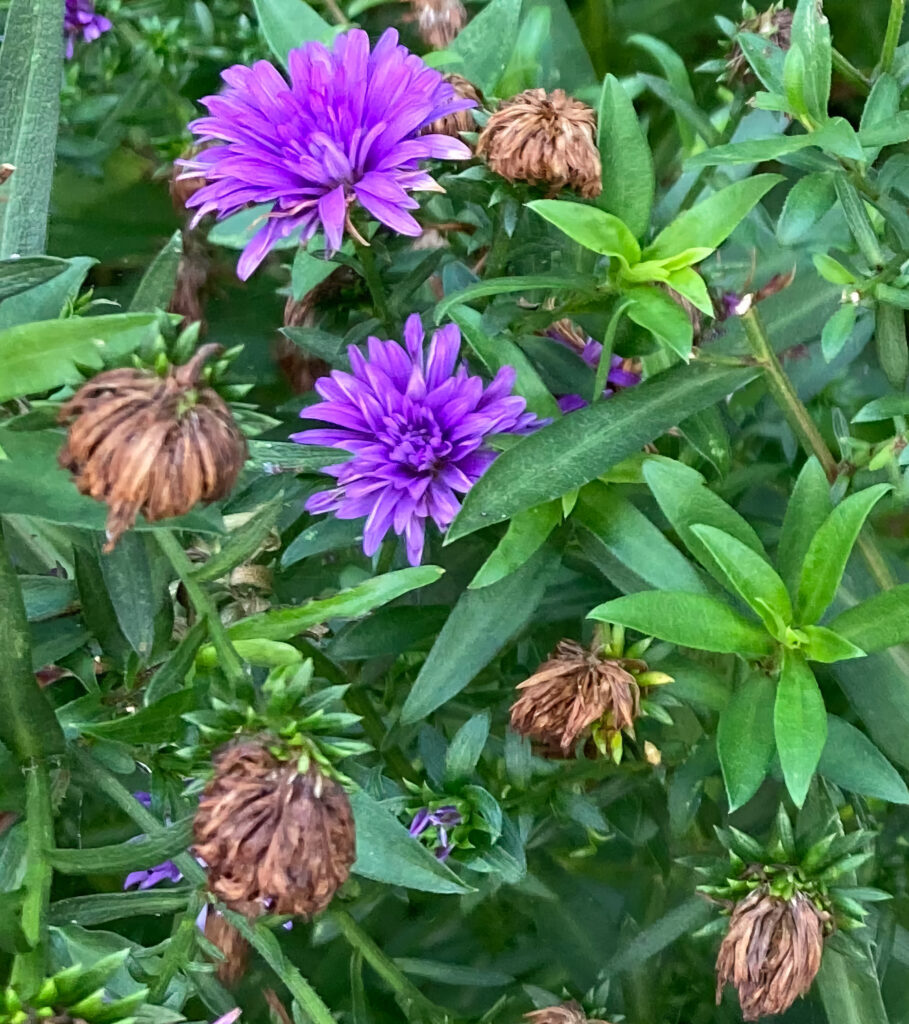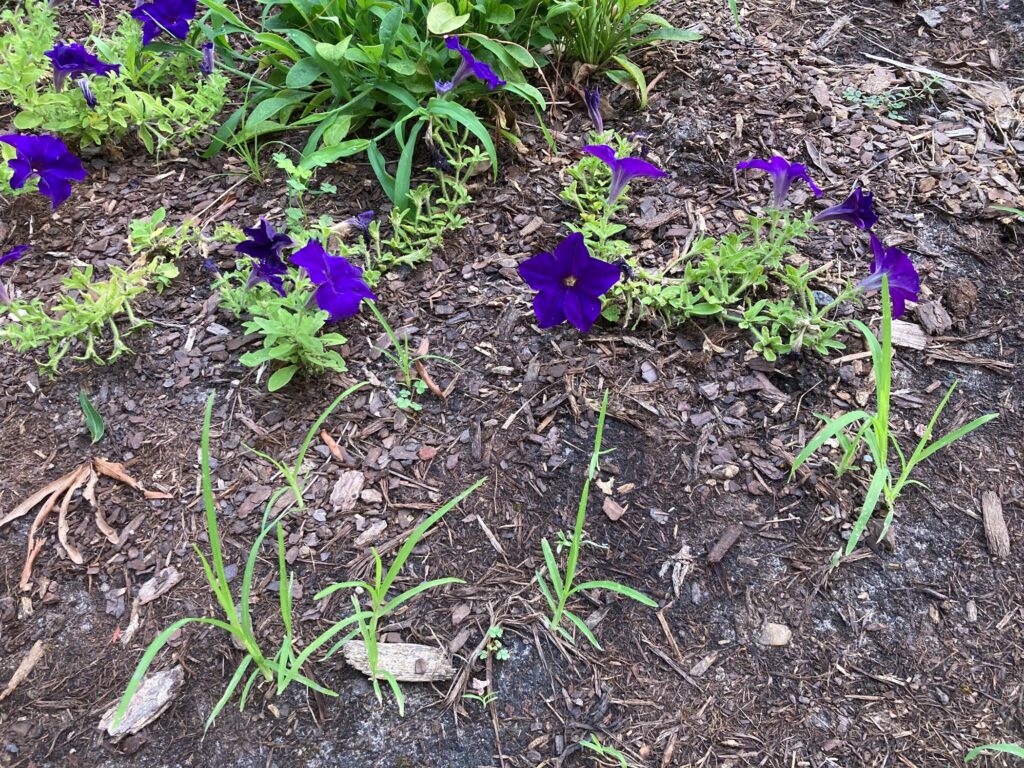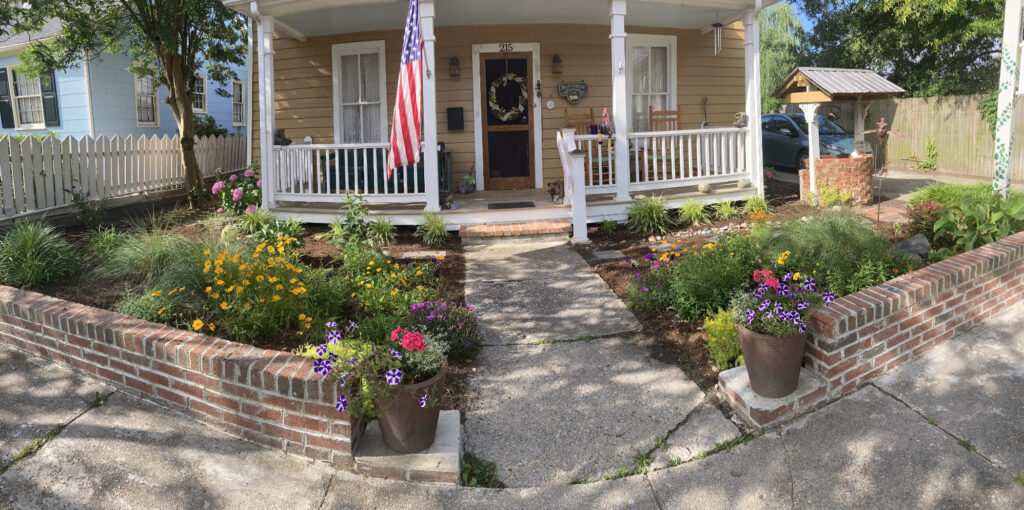
As I sweated through a recent session of deadheading my flowers in the midst of this meltingly hot summer, I had a lightbulb moment.

Gardening is a perfect metaphor for writing. One can also draw parallels to life, in general (but that’s a blog for another day!) Bear with me, now, as I explain myself. I believe that you fellow gardeners and writers will relate to the process, and fellow garden-lovers and readers will gain insight into what goes into the creation of your favorite gardens and books.

When it comes to gardening, seeding—whether with seeds or seedlings—is the most fun and creative for me. It happens in the fresh coolness of spring when the world feels full of promise. After having prepared the soil, and researched the best plants to grow in my region, I giddily spend time (and money) at the garden center. Then, I happily snuggle those seeds and young plants into the fertile ground, which gratefully accepts that new life after its long winter’s nap. I take “baby pictures” of my young garden and dream of its full-flowered future. (Speaking of full-flowered, check out the photo of the nine-foot-tall sunflower that my husband grew from seed this year!)
This equates to the first draft writing stage of a book. Everything and anything are possible! For me, this follows a lengthy period of preparation in which I’ve spent hours researching—sometimes going down intriguing but time-sapping rabbit holes of information—making notes, outlines, story and character arcs, chapter summaries etc. Then, I pour out the story as the empty page (or computer screen) eagerly laps up the words after its dry spell of inactivity. Once complete, I sit back and bask in the afterglow of heated creativity, relishing my newly flowered work.

Back to the garden…after the first blooms have burst into lovely flowers, those beautiful blossoms begin to fade, grow tired, and turn brown. This is the sad part of gardening for me as I have to go after those spent blossoms with my shears and chop off the deadheads. (Not to be confused with The Grateful Dead fans!) As I clip away the brown and shriveled flowers, I tell myself—and the plant—that this is for its own good. A satisfying haircut will make it healthier and able to bloom once more in all its glory. And, if the blossoms have gone to seed, I can dry them out and harvest the seeds for future planting.
Thus, I have reached the revision stage of my writing in which I revisit my story after I’ve taken a little break from it. No longer blinded by the initial euphoria of creativity, I seek out what works and what doesn’t, what moves the plot or character development along, and what no longer serves a purpose. Some of those “gorgeous” passages and plot lines, or even some whole new characters, which at first blush I was certain were creative genius, must be cut away so that the more productive sections can thrive. I must ruthlessly deadhead the areas that at first bloomed before my eyes but now detract from the work as a whole. As authors William Faulkner and, later, Stephen King so famously said, sometimes you have to “kill your darlings.” For those sections, characters, and plot lines that I cannot bear to completely delete from my literary life, I cut and paste them into a writing bank, a folder set up to contain them for future use and inspiration.

For me, the most tedious part of gardening is weeding. I’ve spent time and energy planning, preparing, planting, and deadheading, and then I still can’t rest! Pesky weeds begin their insidious infiltration into my lovely garden. Blades of grass, which may stubbornly refuse to grow in the lawn, sprout with joyful abandon among my flowers. Ach! Bent over the hot earth, stinging sweat dripping into my eyes, I pull out the weeds, one by one. Some are sneaky and actually grow up inside my plants, camouflaging themselves amongst the greenery until they rear their ugly heads beside the blossoms. These are especially hard to remove without harming the host plant. But…wait! That’s not a weed. That’s a “wildflower!” (The exhausted mind has a way of playing with us.) Perhaps it has a right to live as much as the cultivated flowers. Maybe I should leave it—Not. Sigh. OK.—I can always carefully pull it up by the roots and transplant it somewhere more appropriate. Perhaps I’ll set aside a special area (far from this garden) as a designated wildflower bed. Perhaps…
Editing—that perfectionist cousin of revision. Now we’re down to the nitty-gritty of individual paragraphs, sentences, words, punctuation marks, which must be examined for their appropriateness and correctness. Editing comes in different phases from broad to minuscule and is absolutely necessary for an ultimately satisfying read. After writers have gone through their manuscripts with a fine-tooth comb (for the umpteenth time!) they need eyes additional to their own to spot the “clunks” and errors cropping up in their manuscripts.. (How could I have missed the extra period at the end of that sentence?) Just as the gardener may have developed what I call “green blindness” and—to resurrect an old adage—can no longer see the forest for the trees, writers can grow blind to their own errors. And, then, there’s the issue of particular words and phrases; I may love a certain descriptive word–say, “soughing”—but if I’ve used it too often or it is too esoteric for my targeted readership, it must be weeded out. Just as with revision, I keep a separate file bank of pulled words and phrases to have on hand for future reference.

Phew! Gardening and writing are hard work. But when followed through with the necessary maintenance, each has the potential to enliven, enlighten, and inspire those who encounter them.
Thanks for stopping by. Y’all come back, now.
Write On! (And keep hydrated with your beverage of choice…)
Kate